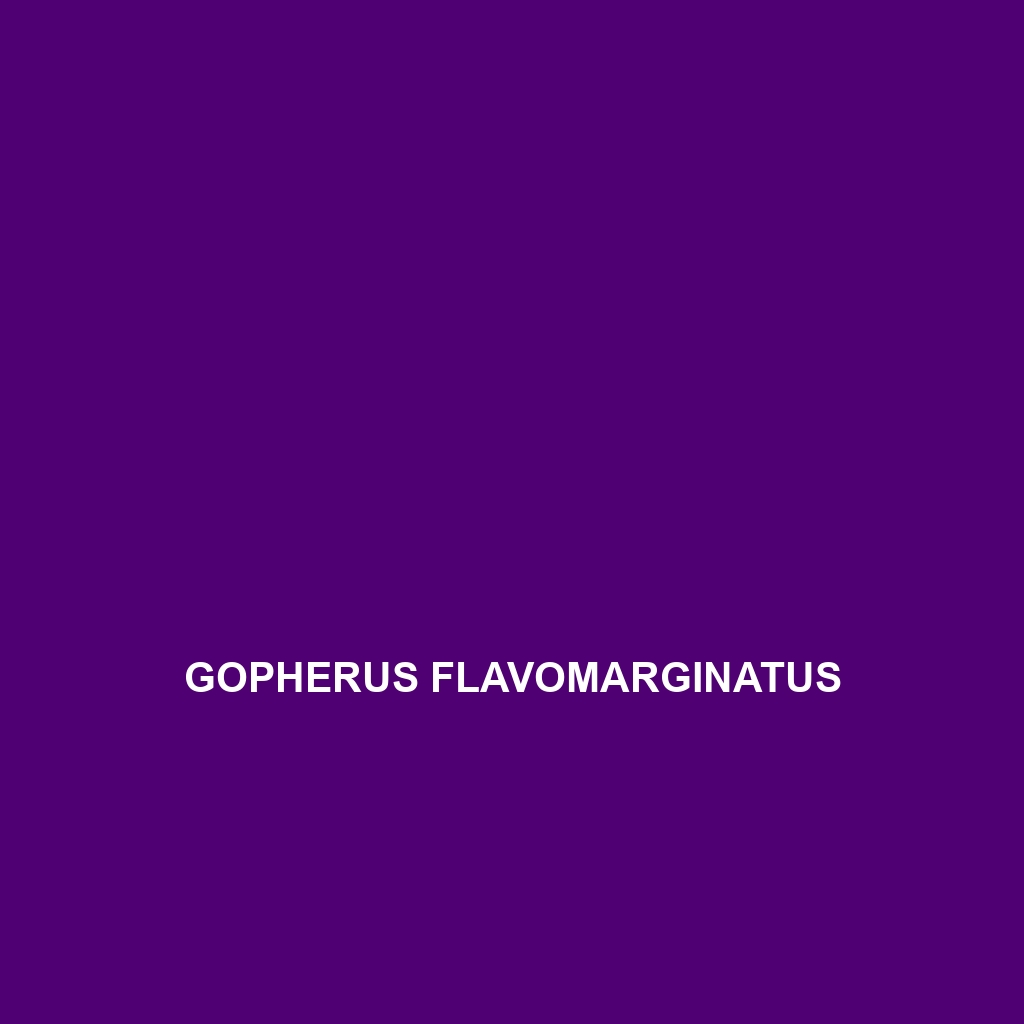Common Name
Gopherus flavomarginatus
Scientific Name
Gopherus flavomarginatus
Habitat
Gopherus flavomarginatus, commonly known as the yellow-margined tortoise, is primarily found in the arid regions of northern Mexico, particularly within the states of Chihuahua and Durango. This tortoise inhabits diverse environments, including semi-deserts, grasslands, and sparse shrublands. Typically, they prefer sandy or loose soils that facilitate burrowing, which is essential for their survival. The climate in these regions varies from hot summers to mild winters, fostering a unique environment where Gopherus flavomarginatus thrives. These tortoises can often be spotted in areas that experience a distinct wet and dry season, which dictates their behavior and activity patterns.
Physical Characteristics
The Gopherus flavomarginatus is known for its relatively small size, averaging about 10 to 15 inches in shell length. One of its most distinctive features is the bright yellow margin that outlines its otherwise dark brown or olive shell, providing a striking contrast that makes it easier to identify. The tortoise has a domed, high shell that is adapted for protection against predators. Its feet are robust and flat, designed for walking on diverse terrains while facilitating burrowing activities. The head is relatively small with a beak-like mouth, which aids in foraging for various types of vegetation.
Behavior
The yellow-margined tortoise exhibits a variety of interesting behaviors, notably its burrowing habits, which it uses as a means of thermoregulation and shelter from predators. Typically a diurnal species, Gopherus flavomarginatus is most active during the warm parts of the day, engaging in activities such as foraging and mating. During extreme heat or during the winter months, they may enter a state of brumation—a dormancy similar to hibernation—where their metabolic rate decreases significantly. Socially, they are generally solitary creatures but can sometimes be seen interacting with others during the breeding season or while basking in sunny spots.
Diet
Gopherus flavomarginatus is primarily herbivorous, feeding on a diet that includes various types of grasses, weeds, and succulent plants. Their feeding habits are crucial for maintaining the ecosystem, as they contribute to plant diversity by dispersing seeds through their droppings. While primarily herbivorous, they may occasionally consume insects, particularly young caterpillars, thus exhibiting minor omnivorous tendencies. Research indicates that a healthy diet is essential for their longevity and reproductive success, emphasizing the role of a balanced herbivorous diet in their life cycle.
Reproduction
The reproductive cycle of Gopherus flavomarginatus typically occurs during the spring and summer months when temperatures are optimal for courtship and nesting. Males display courtship behaviors, which include head-bobbing and nipping at females to solicit mating. After successful copulation, females will lay an average of 3 to 7 eggs per clutch in shallow nests dug into sandy soil. The incubation period lasts approximately 90 to 120 days, after which the hatchlings emerge. Maternal care is minimal, as the mother does not provide protection post-oviposition, leaving the hatchlings to fend for themselves immediately after hatching.
Conservation Status
According to the International Union for Conservation of Nature (IUCN), Gopherus flavomarginatus is currently listed as ‘Vulnerable’ due to habitat loss and degradation from human activities. Urbanization and agricultural expansion significantly threaten their natural habitats. Conservation efforts are underway, including habitat restoration and the establishment of protected areas to ensure the survival of this species. Awareness campaigns targeted at local communities aim to reduce poaching and encourage sustainable land use practices that benefit both wildlife and local livelihoods.
Interesting Facts
One fascinating fact about Gopherus flavomarginatus is its remarkable ability to adapt to harsh environmental conditions. The yellow-margined tortoise has developed a unique behavioral adaptation to survive prolonged drought periods by entering a state of dormancy, conserving energy and moisture. Additionally, the species is known for its social interactions during the breeding season, where males can often be seen engaging in displays of aggression and courtship rituals to attract potential mates.
Role in Ecosystem
Gopherus flavomarginatus plays a vital ecological role as a herbivore, influencing the plant community structure through grazing. These tortoises also aid in seed dispersal, allowing various plant species to propagate across their habitat. As prey items for larger predators, including coyotes and birds of prey, they contribute to the food web, serving as an essential link within their ecosystem. Their burrowing behavior helps aerate the soil, benefiting plant growth and promoting a healthy, balanced ecosystem.
